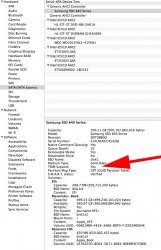@flowrider
Lou, sorry for the confusion, I was just pointing out that there is no way of knowing if trim is really working as it should or not. For example, I can edit IOAHCIBlockStorage.kext to show a Yes or No in System Profiler. It is just a kext edit, takes 1 minute.
But what I really meant is - is it really working on a raid 0 on a marvell chipset with cMP with intel 5520 chipset? Besides, the way the data is flowing is, Intel chipset then to the Marvell chipset and then to the Samsung controller. Sorry for diving into the tech stuffs.
Samsung ssd controller needs trim, I am sure about that. However, there is no way of knowing whether or not it is working as it should. All I can say is that I have seen Samsung SSDs in Raid 0, on many cMPs (up to 8 units at work), 2 have trim enabled and no-trim on the rest. I have not seen any difference, in fact, the ones that have trim enabled are a little bit slower than the ones with trim disabled.
Now, I have enabled trim on my home mac but I do a shutdown/system reboot once every 2-3 months, keep 10-20% of free space. But the rest of the Macs at work are 24H running, SSDs get full and contents get deleted on a daily basis. But Samsung SSD in Raid 0 still works. To some extent better than the ones with trim enabled.
So personally I am not sure about it, and I do not want to claim that it is working 100% by just looking at system profiler. I am tuning stuffs at the moment, I cannot run quick bench or BM benchmark and pretend, `yes, it is perfect, everyone should use it or buy one`...(sorry Lou I am not interested in this type of hype)
It definitely takes time to fully stress-test core components, depends on people as well. But hey - if it makes you comfortable to think that trim is enabled...then why not



